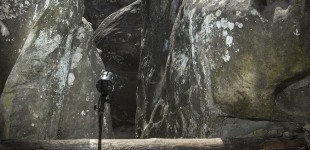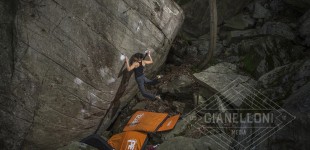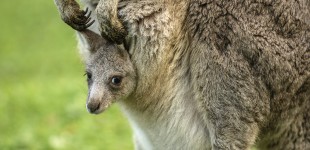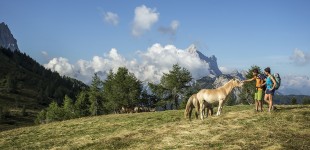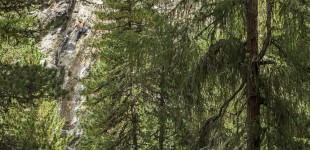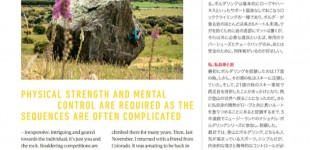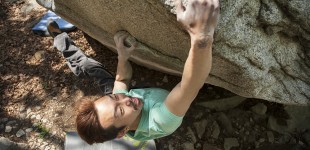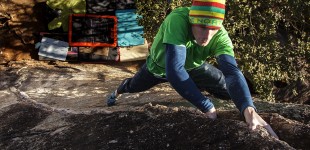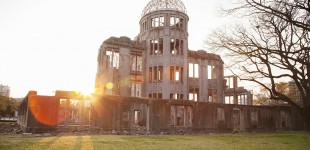Go Climb Something!!!
No matter where the journey takes you, do not forget your camera and climbing shoes.
Latest
Life On The Move
Sometimes Tight is Good
What makes a good photo? This is a question that everyone who owns a camera asks themselves at one point or another. Weather you are a professional, pro-sumer, or just someone who loves their point and shoot, creating an eye catching photo matters. I have not been making photos for very long, but I want to share one thing that I have learned in the on-going growth process of photography which might help you too.
Whenever you open a climbing or outdoor adventure magazine most of the photos are very wide and not only show an amazing move or emotion, but the images capture where the climber/adventurer has come from and where they are going. In the past I, like most aspiring photographers, have had photos turned down by publications. Not because the photos were not magazine quality, but because they were too tight. “If it was only a bit wider, we could use this great shot. Try going back and go WIDE.” one editor’s email advised me. When you open a fashion or artsy magazine most, if not all, of the photos are very tight and in your face with detail. Why is there a difference?
One reason is that editors create print based on what their audience wants to see. Of course in the fashion magazines the whole reason someone looks is to see the details of the clothing, the jewelry or where the fashion lighting is heading next. In an outdoor magazine people are less concerned with seeing what Dave Graham looks like, but more interested in the boulder and where it is located. I on the other hand love to see the emotion on a climber’s face and body or the features of the rock the climber is on. Why not combine the two?
I love taking tight shots. I appreciate the emotion you can capture in a tight photo that may be overlooked in wider shots. A close up is especially nice when the scenery is uninspired, but the movements are motivating. Take this image for example.
I took this image at a bouldering area in Japan called Kawai yesterday. The area consists of a few large boulders in a thick cedar forest. Some of the cedars obstruct a decent wide view, but pulled in tight and in the right light you can create an image that looks great. The Capitol boulder is about five meters tall and very beautiful, but the overall visual experience is bland. Of course this is just my perspective, but that is the point, right? The emotion on Shin’s face, the position of his body and the color of the rock are very prominent in this tight shot. A wider shot, in my opinion, would loose that feel.
Here is another example of a tight shot that would have lost it’s appeal if it were “a bit wider”.
Justin is pulling through a tough sequence on the Arch located on Oahu, Hawaii. Being close to the climber in this instance was great. I was able to capture part of the scenery, the rock, and most importantly to me, the emotion.
I like the idea of backward editing my photos. I use it often in my process. What is backward editing? I crop all the way down to the most important part of the picture, the climber in this case. From here I expand my “keep” area asking myself ” what does this add or distract from the focus”. I heard one photographer say that cropping photos is for amateurs. I hate to burst that photographers pro-bubble, but most, if not all photographers, use a crop tool to some extent. I am not saying that I crop all of my photos, to the contrary actually. I might crop one out of a set of 30-50 photos. Cropping is just another tool in creating a tight shot.
Another aspect is light. Lighting is very difficult and requires copious amounts of time, energy, patience, and experience to master. Weather you are using three monolights or five speedlites you have to know what you are expecting the photo to look like as a final product or at least an idea. In terms of tight shots in the climbing or bouldering setting it is often, at least in my case, difficult to gauge the correct intensity/power to start with. I wind up taking dozens upon dozens of test shots to capture what my mind is seeing. Sometimes it is just not possible with the equipment I am using. Other times I will craft an effect or the natural light will change and create something I could never manifest. It seems the tighter the shot the smaller the amount of light that enters your shutter. More time than not I wind up shooting tighter shots with supplementary light to achieve my vision.
I love the time and work that it takes to creating a photo, but I also love to capture a candid moment. It is almost an obsession when I am out shooting. This is a problem when I am out with my son Gavin, who is 15 months old. I wind up either missing “the” shot or turn just in time to see him stick a hand full of sand into my camera or chalk bags.
I do not think that in terms of adventure sports there is a better way to shoot than in the moment. In climbing capturing “the” moment staged takes the beauty out of shooting for me. There are times when it is called for, but most of the time the more raw in the moment and natural the image is, the better the shoot day is for me.
In the end you are left with tools and an eye for capturing a moment. I challenge you to break the mold and spend the extra time to not only find the shot you set out for, but for the tight shot with all of the emotion.
Go Shoot Something!!!!
